On a warm (78° F) April morning, President Franklin Delano Roosevelt, was vacationing at the Little White House in Warm Springs. Early in the morning he sat and signed several documents and continued with a session that would result in a portrait by Elizabeth Shoumatoff, an artist and fellow New Yorker. As lunchtime approached, he said, “We have fifteen minutes more to work.” Suddenly he raised his right hand and passed it over his forehead several times in a strange seemingly uncontrolled way, but never said a word. His head bowed and within a moment he was unconscious. He had suffered a cerebral hemorrhage; he died later that day. That was April 12, 1945. He was 63 years old.
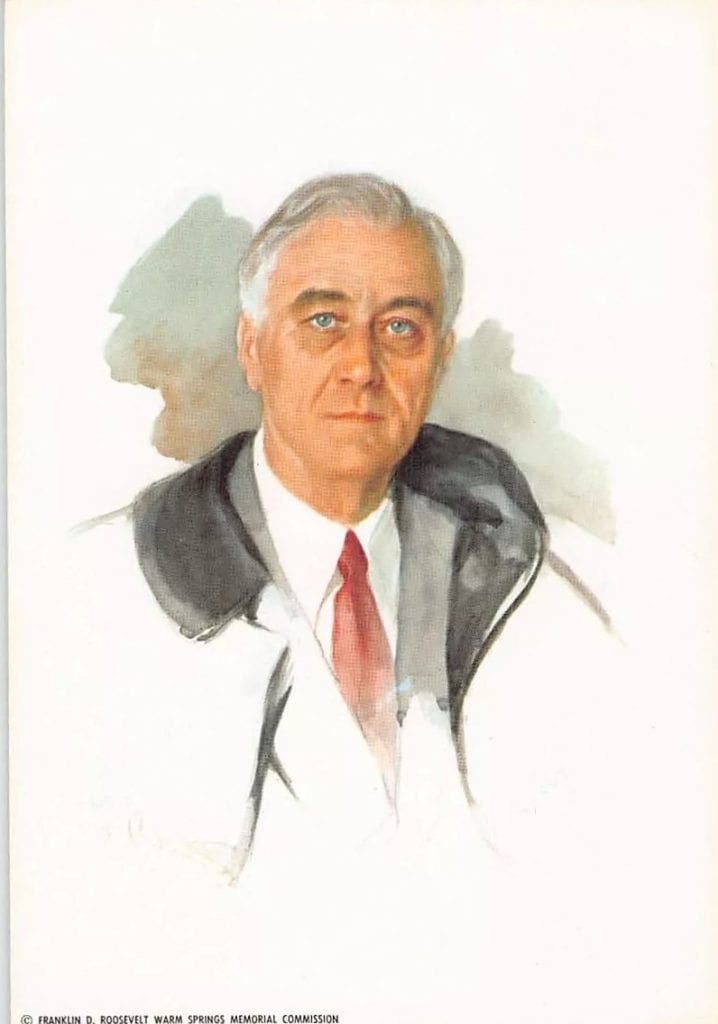
FDR was elected as United States president on November 8, 1932. His first inauguration was on the following March 4th. He served as president for 12 years and 39 days.
His first visit to Warm Springs was in 1924; he heard about the curative spring waters and visited the area with the hope that he would get some relief from the poliomyelitis that had crippled him three years earlier.
Mr. Roosevelt’s reaction to the area was so positive that in 1926 he bought the resort property and 1,200 acres for $200,000. Seeking medical advice and contributions from his friends, he organized the nonprofit Warms Springs Foundation, which became the deed-holder when in 1927 the property was donated by FDR.
The foundation created what became the first hospital devoted to the treatment of polio victims. The organization became the National Foundation for Infantile Paralysis, the sponsor of the “March of Dimes,” and was instrumental in promoting the development of a cure for polio.
For the rest of his life FDR continued to be actively involved with the foundation.
FDR’s first visit to the Little White House was in the winter of 1932-33, just before his inauguration. His new house was finished in 1932 and in essence was a modest, six room one-story cottage. The wood-frame building featured a four-columned central temple form portico. The slightly off-center entrance hall cuts through the combination living room dining room and opens into a bedroom on the left and into a narrow side hall on the right. The living room/dining room is glassed-in on the west side with high windows flanking French doors that open onto a sundeck. Roosevelt enjoyed the serenity of the sundeck’s view overlooking a heavily wooded ravine.
Roosevelt’s personal secretary used a bedroom off the living room to the right. The two bathrooms are located between the kitchen and the secretary’s bedroom and connecting Franklin and Eleanor’s bedrooms. The only readily visible adaptations of the house to Roosevelt’s infirmity are the flat sills and the raised bathroom fixtures.
He returned to Warm Springs for the last time in March 1945. Just back from the Yalta Conference, he planned to work on the address with which he would open the United Nations Conference. He also entertained neighbors and conferred with two important guests, Sergio Osmena, the president of the Philippines, to whom he gave assurances of future independence, and Henry Morgenthau, secretary of the treasury. On that Thursday, he planned to attend an afternoon barbecue given by his Warm Springs friends and then a minstrel show at the hospital. Unfortunately, Mr. Roosevelt’s day was interrupted by a massive stroke as he sat in his favorite chair near the fireplace, posing for his portrait. He was carried from the room into his bedroom, he died later that same afternoon. The “Unfinished Portrait” is on exhibit at the Little White House.
Curt Teich Postcards
The following ensemble of linen postcards are Curt Teich productions from the late 1930s (1938) to the early 1940s. There are 24 (?) issues in the set, with a number of reissues and variations.
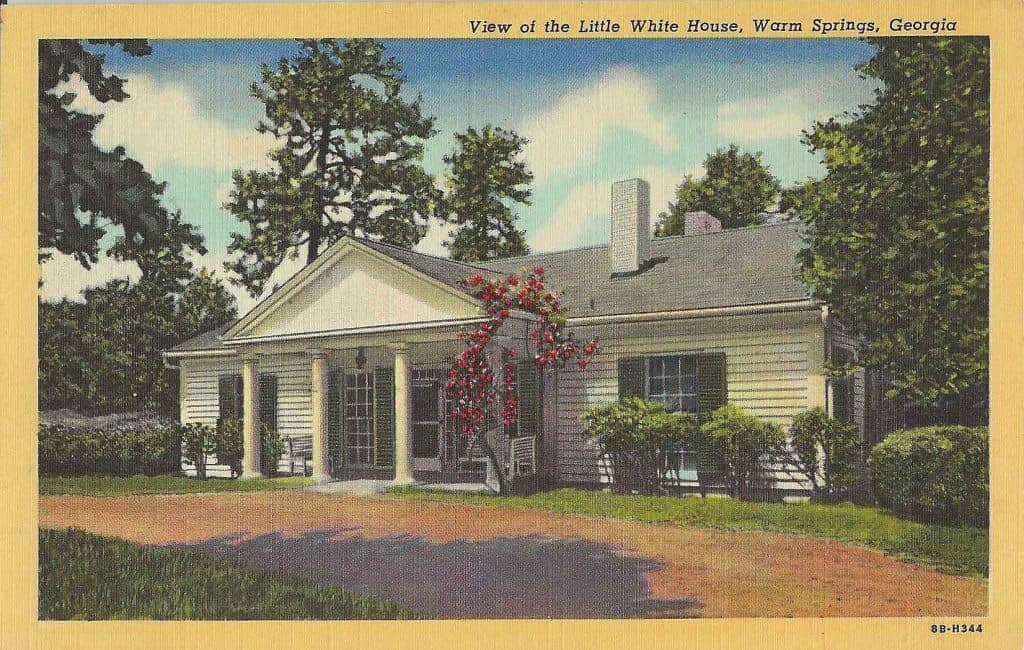
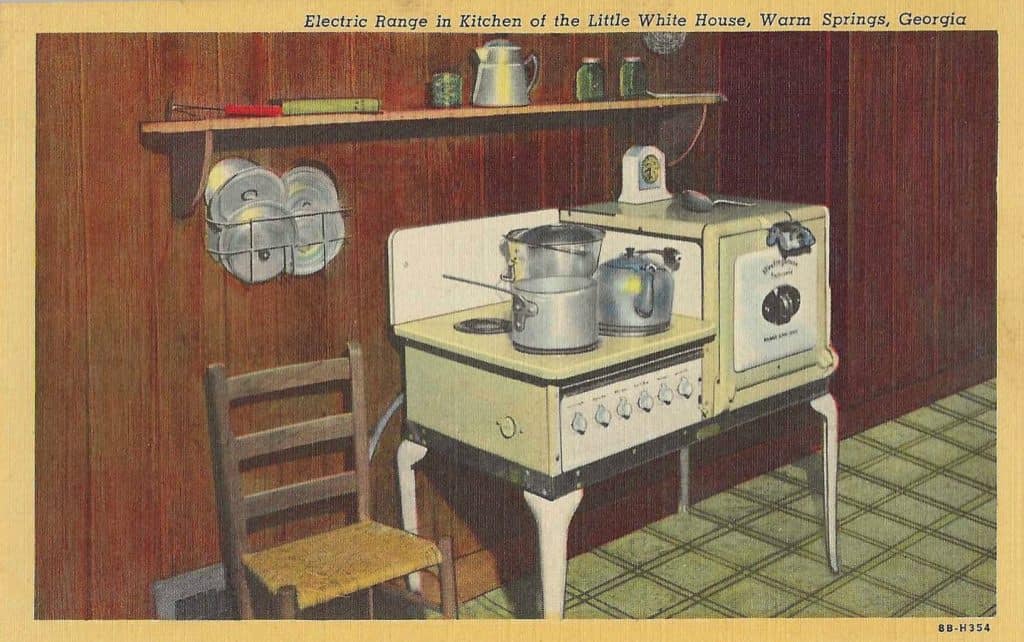

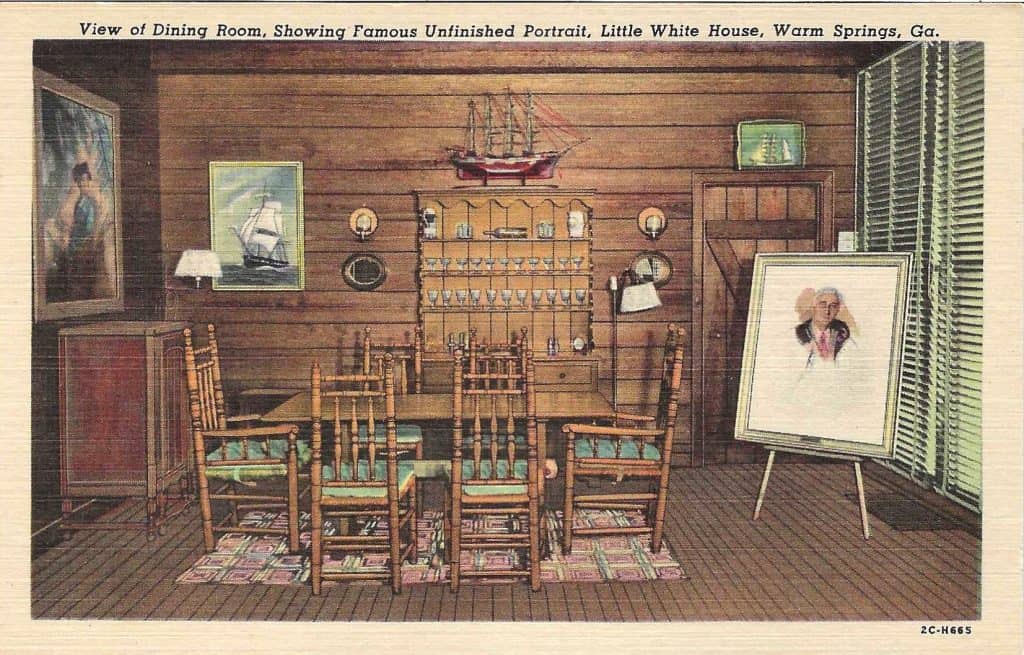
Elizabeth Shoumatoff never finished the original portrait. It remained in her possession until April 12, 1952. She did however paint an identical copy (except one feature) from memory. The one change she made was the color of the president’s necktie, in the original the tie is red, in the copy the tie is blue. The copy and the original are at Warm Springs.
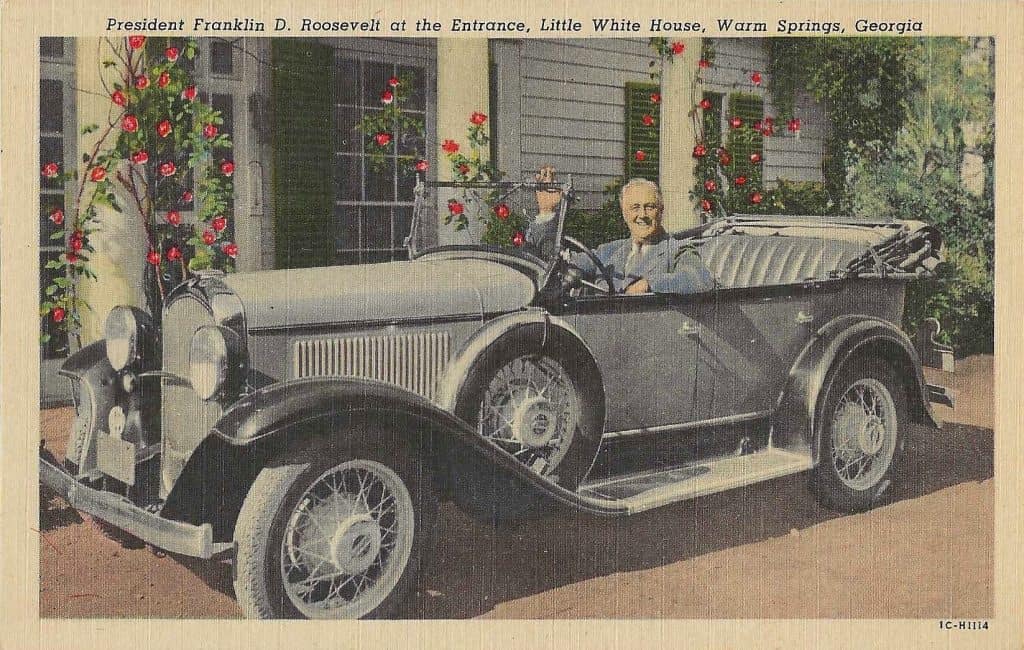
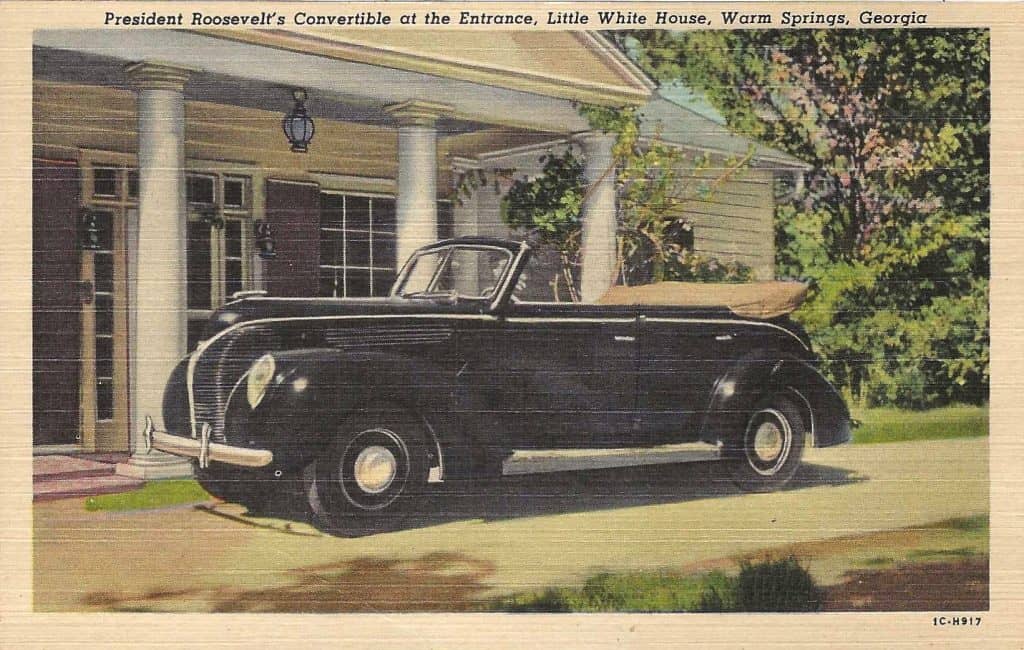
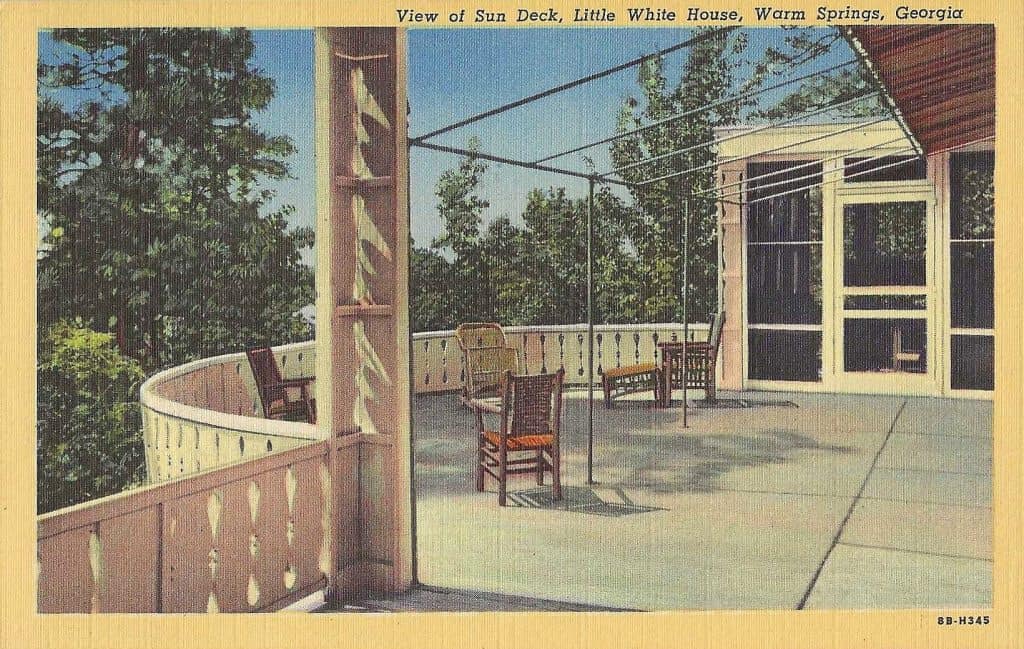


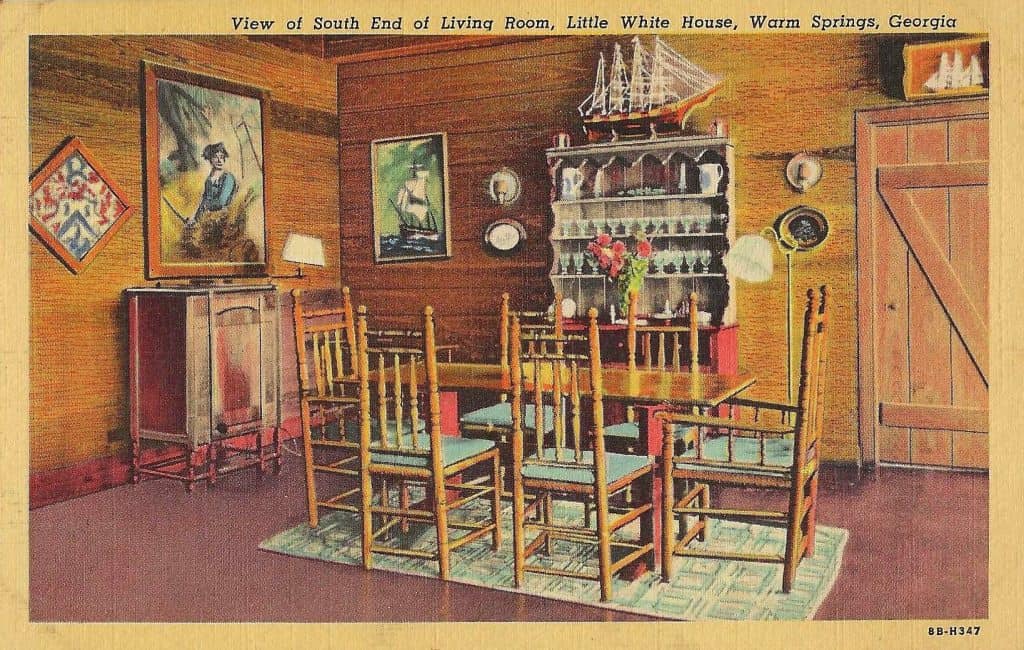
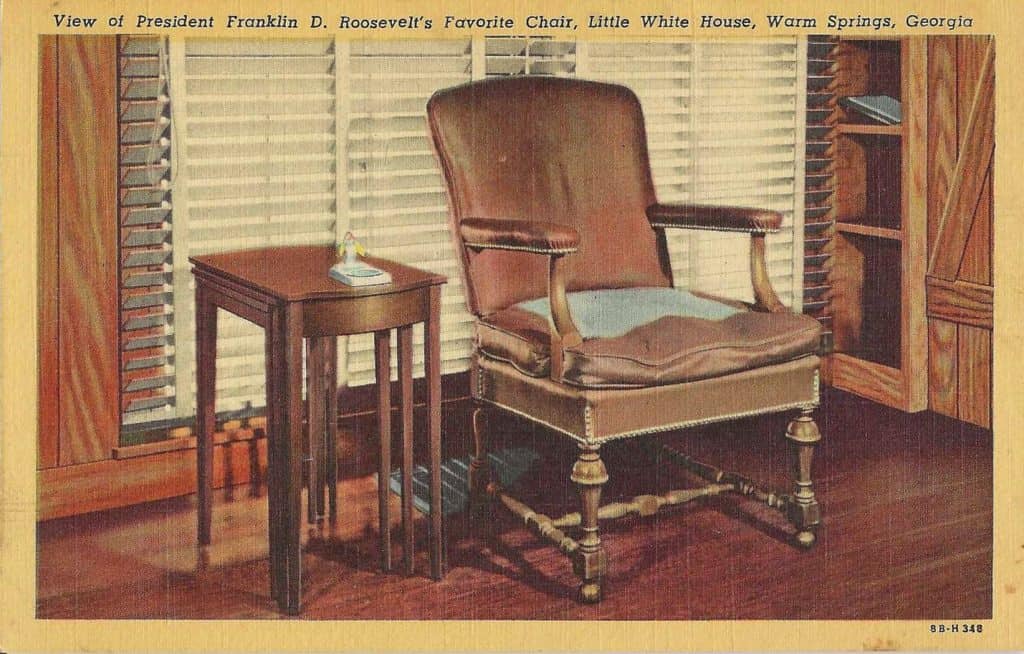
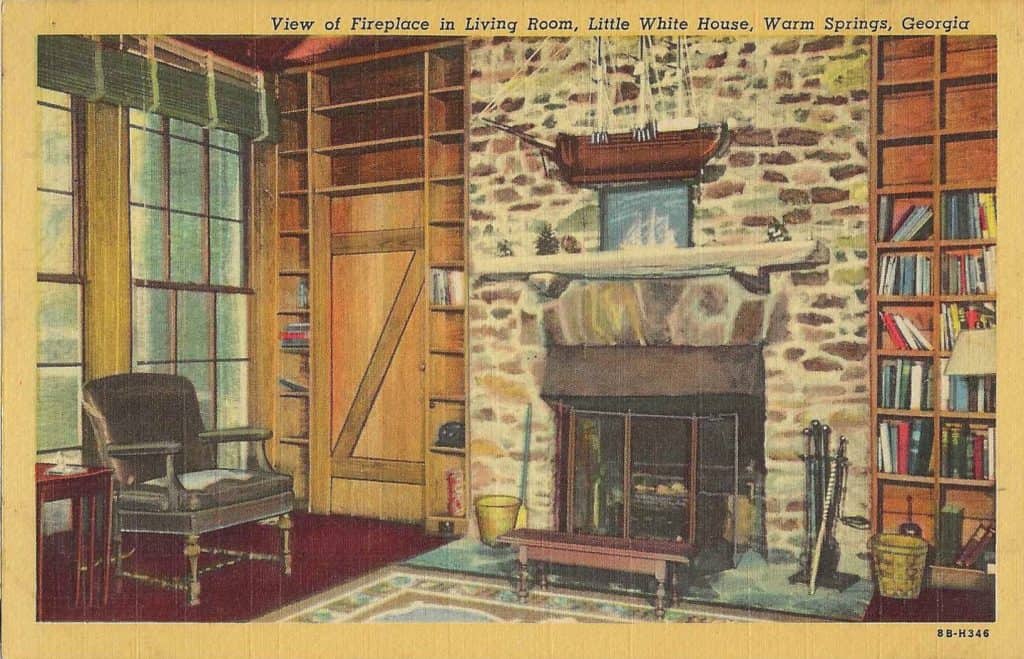
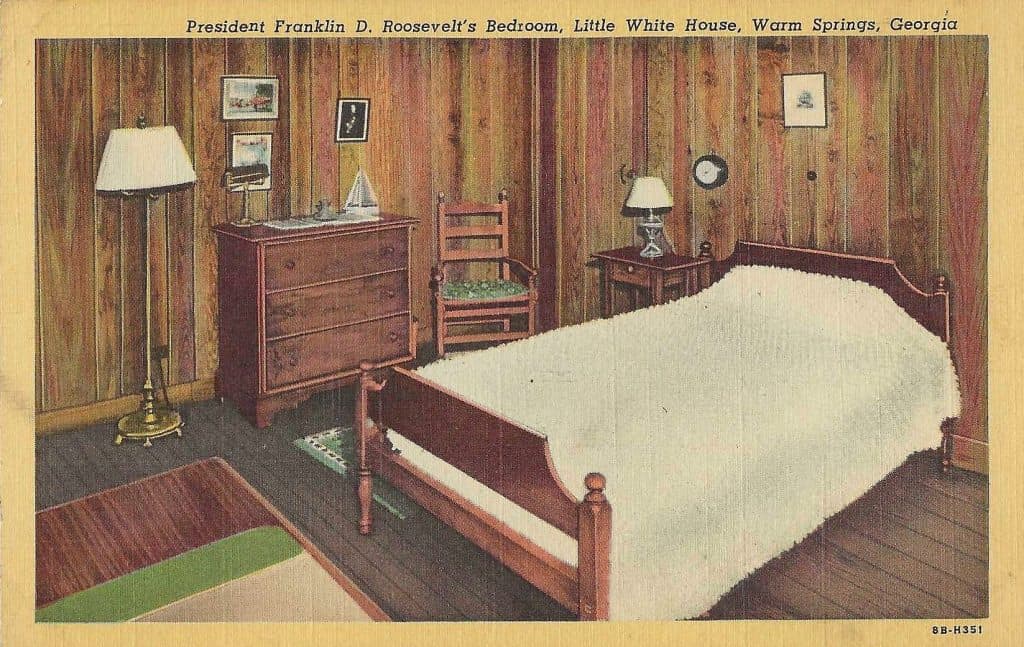
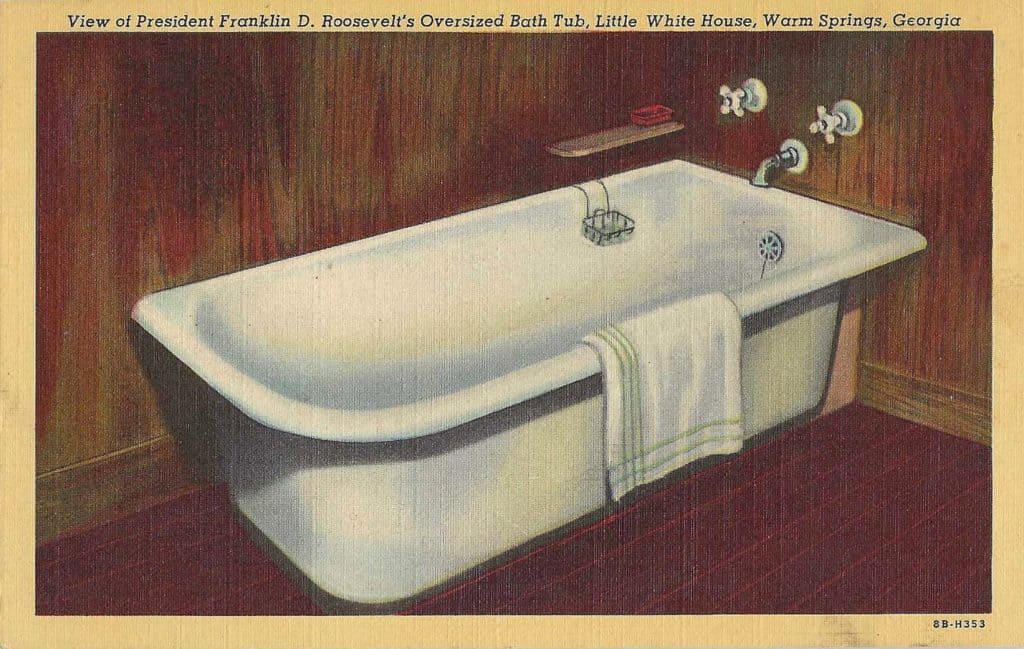
Thanks for this great reminder of a wonderful vacation memory. One of the benefits of having a daughter living in the south east is that we have been able to enjoy seeing much of the area. Warm Springs, GA was one of many historic and memorable places that we have enjoyed..
Great article. I have a postcard of the exterior of the Little White House. I did not realize there were more to collect.
My favorite cards in the set are the two which depict Roosevelt’s automobiles.
I am from Hyde Park where FDR’s home and library are, so this article was very interesting to me and the cards are lovely.